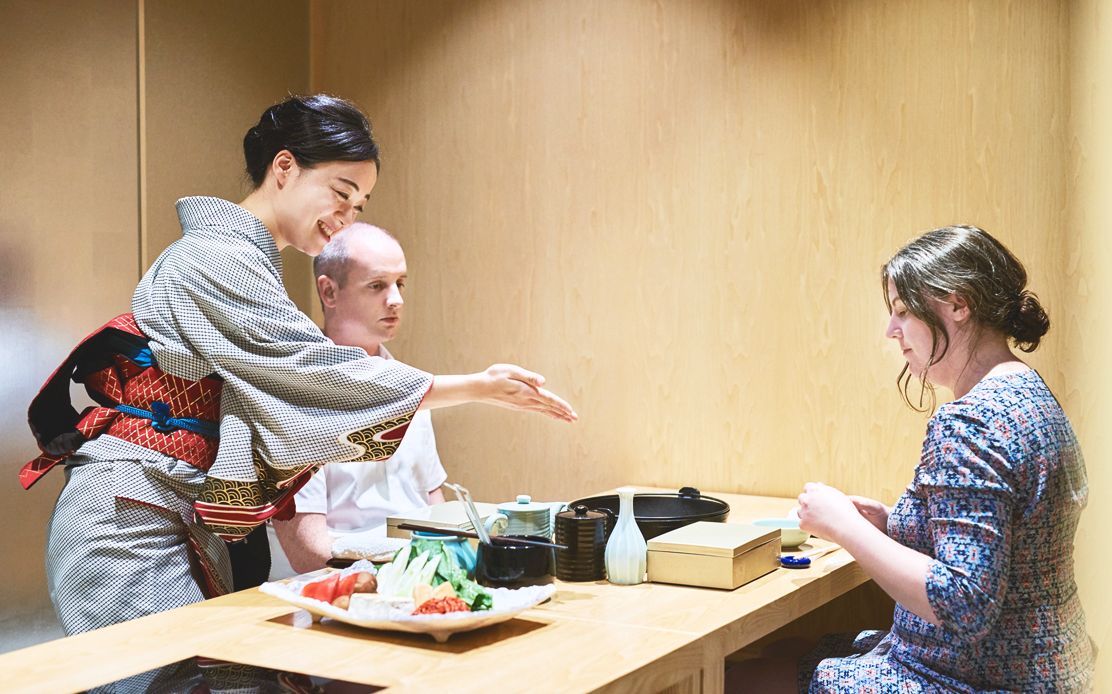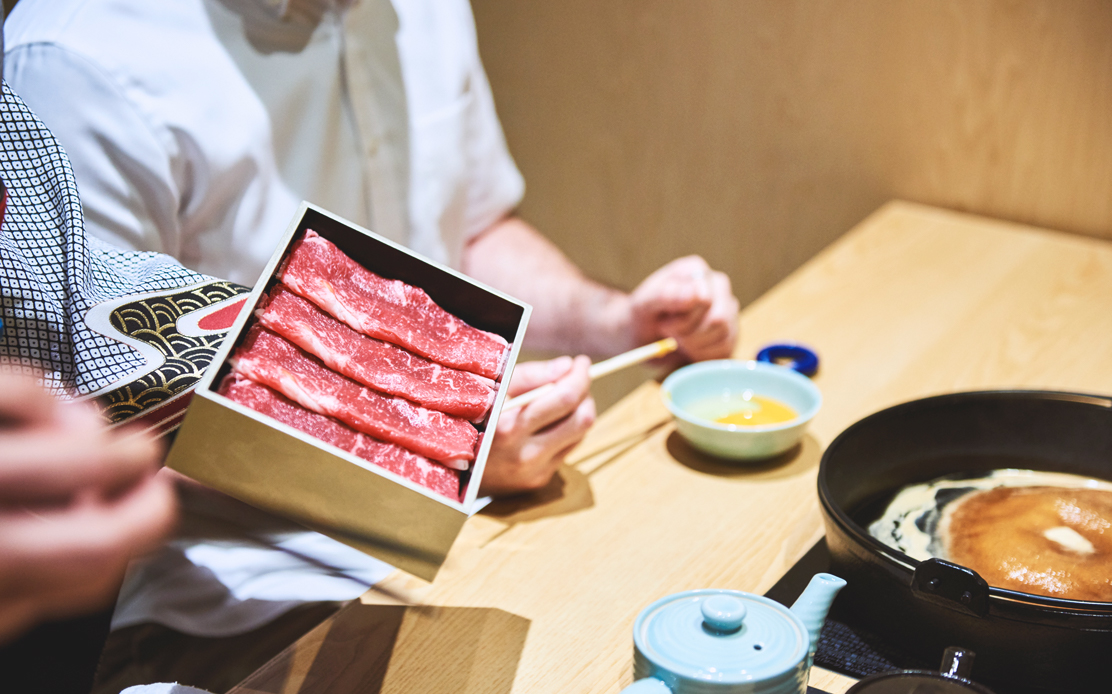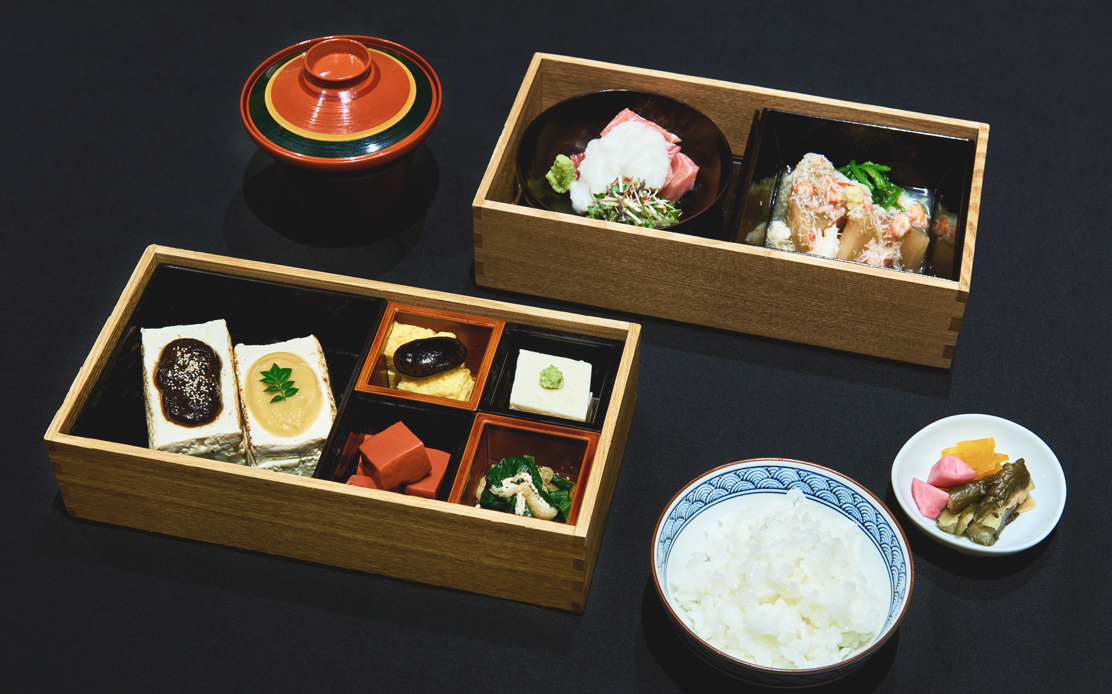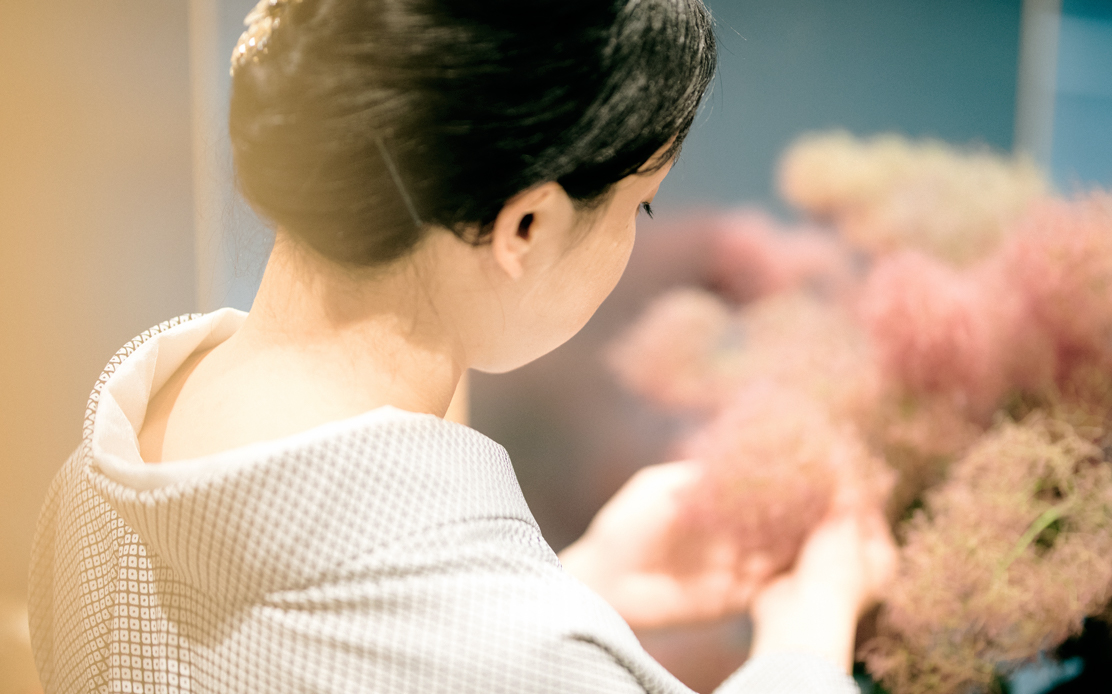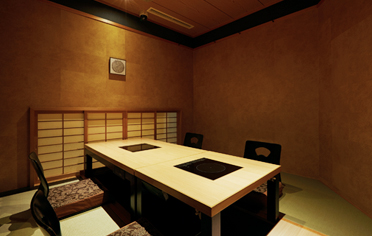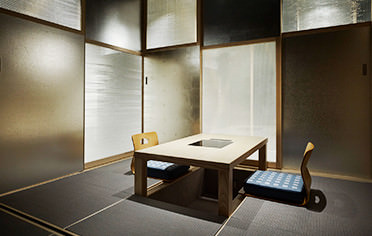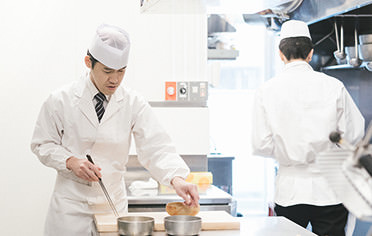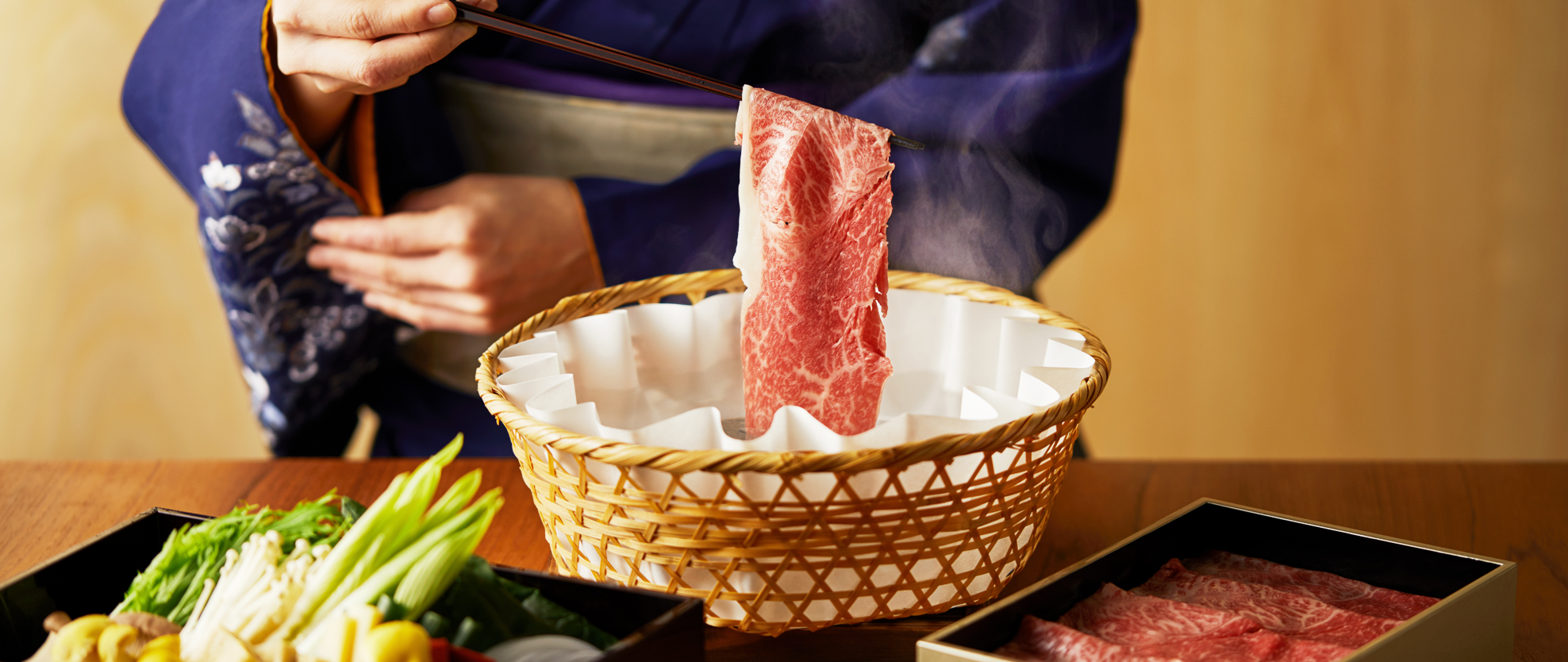
JAPANESE TIPS
Is this your first time visiting Japan? Have you eaten Japanese food before?
Here you can find out more about table manners when eating traditional Japanese meals and how to eat shabu-shabu, sukiyaki, and kaiseki cuisine.
MANNERS
Learn about etiquette when at a Japanese restaurant, including how to use chopsticks, oshibori (small wet cloth), and zabuton (floor cushion).
Shoes
In Japan, people take off their shoes inside homes, shrines, temples, and other buildings. Many Japanese restaurants also have guests remove their shoes upon arrival.Guests take their shoes off at the entrance of our restaurants. There are shoe lockers next to the entrance where you can store your shoes. Please take the locker key and keep it with you to retrieve your shoes when you leave.
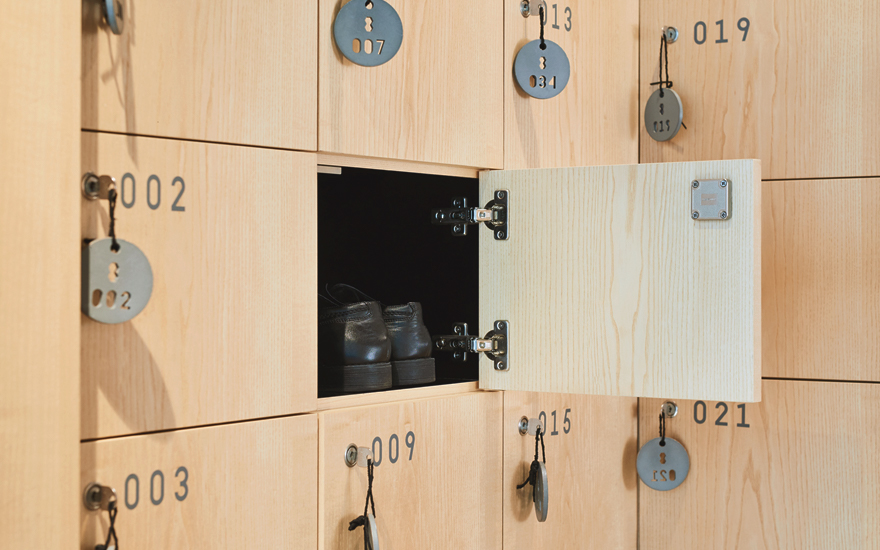
Zabuton cushions
Zabuton are the large, flat cushions people use to sit on tatami mat floors. Please do not step on the zabuton with your feet when sitting down. Please sit starting from the area close to the entrance of the room. When there is a horigotatsu (low table with sunken space for legroom), sit down on the zabuton first and then slide your legs out to side and under the table. Do not move the zabuton around, flip them over, or fold them in half to use. Please also be careful not to step on other people's zabuton when walking.
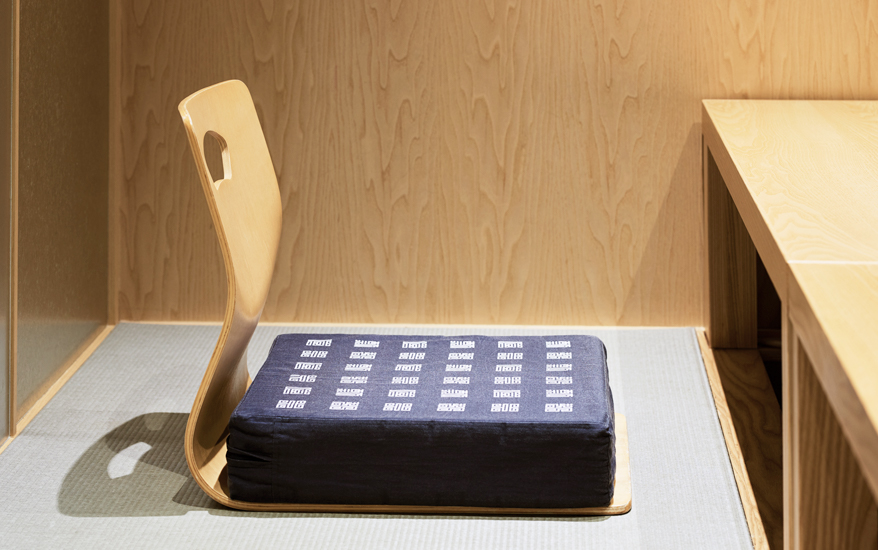
Oshibori wet cloth
When you sit down, you will be given a wet white cloth called oshibori. This cloth is for wiping your hands before you eat. Please wipe your hands when you are given the oshibori, and then place it back on its wooden holder. You can also use the oshibori while you are eating if you get food on your hands. When you are finished with your meal, you may be given a clean oshibori. This is a sign of hospitality, so that you may leave the restaurant feeling clean and refreshed.
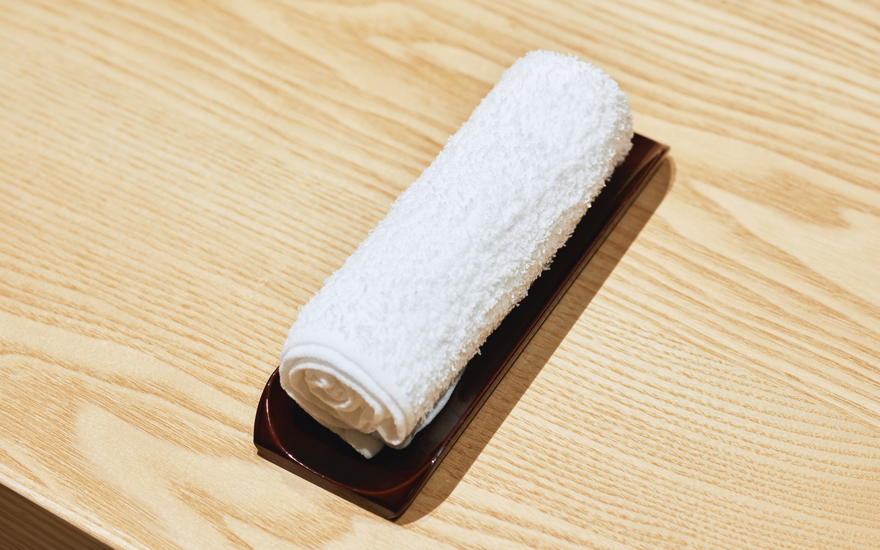
Chopsticks
Hold the two chopsticks in your hand as you would a pencil, with one chopstick over the other. The bottom chopstick does not move. Move the top chopstick while holding it between your index and middle finger. There are many rules about what not to do while holding chopsticks. Here are a few of the important rules. You don't need to stab food with chopsticks the way you would with a fork. Grip food in between the two chopsticks. Please avoid biting down on the chopsticks, putting them in your mouth when they are not holding food, or licking food held with chopsticks. Please avoid placing chopsticks upright in a bowl of rice. Please avoid passing food from chopsticks to chopsticks. If you have any other questions about chopsticks etiquette, please ask our staff.

Dishes
Japanese dishware is very delicate and may get scratched or break from using a knife and fork. Please use a knife and fork only with the dishes provided with the utensils. For soups and foods with broth served in bowls, hold the bowl with your hand and place it directly to your lips to eat. Do not use a spoon. For simmered foods with a lot of liquid that could spill or splatter, please eat the food while holding the dish up with one hand, if the dish is not too big to hold, so that any liquid falls on the dish. However, do not place any dishes directly to your lips except for soups.

Tipping
Tipping is not required at most Japanese restaurants. For dinner hours, a 10% service charge is automatically added to your bill. There is no service charge for lunch. All staff provide hospitality, so there is no need to give your server a tip. If you enjoy your meal, please tell the staff thank you. This appreciation serves as our reward.
HOW TO EAT
Learn about how to eat the traditional Japanese meals of shabu-shabu and sukiyaki.
Shabu-shabu
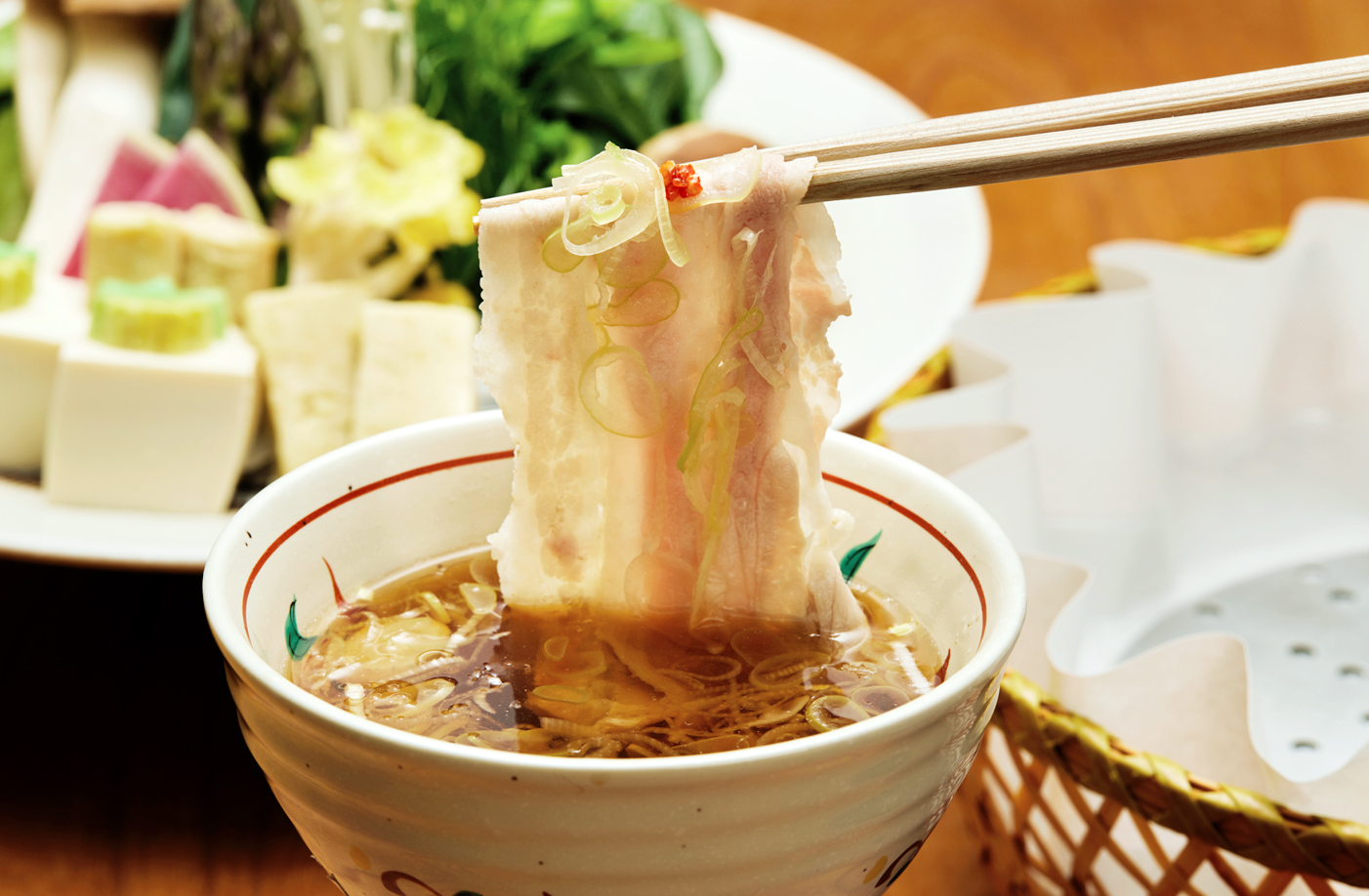
Shabu-shabu is a type of hot pot, where thin slices of pork and beef as well as seasonal ingredients are swished around in a pot of boiling water and then dipped in a sauce and eaten. Hyoto offers Dashi-Shabu (dashi broth + shabu shabu), where the ingredients are swished around in a pot of boiling water and then dipped in dashi, a traditionally seasoned Japanese broth, and eaten.
Shabu-shabu
-
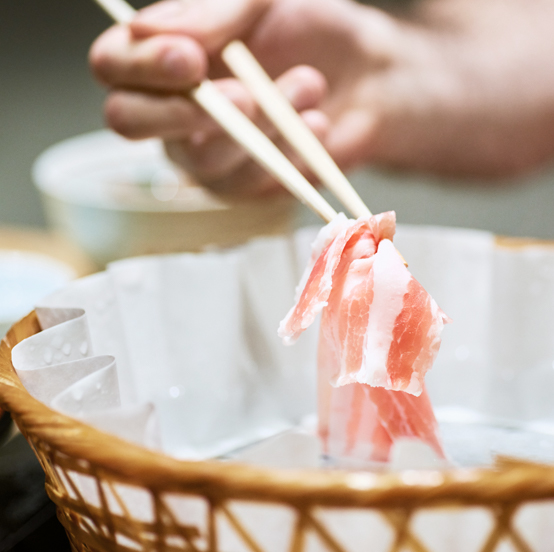
1How to cook the meat and vegetables
Boiling water is placed in the pot. Take a slice of meat, and swish it around in the pot to cook it. Vegetables take longer to cook, so they are placed in the pot and simmered. When the vegetables are soft, they are ready to eat.
-
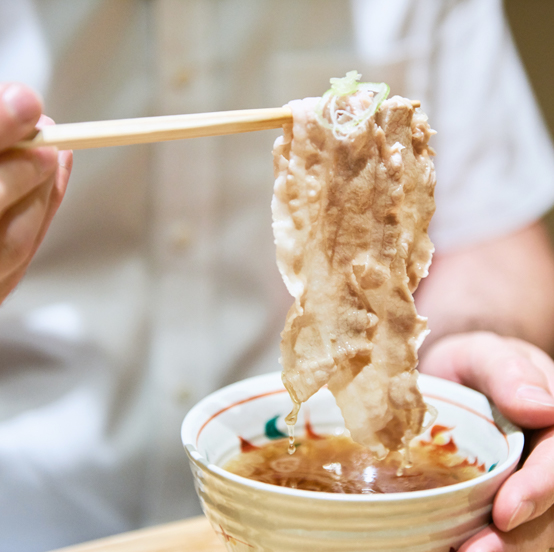
2Dip liberally in the broth
When the meat and vegetables are cooked, dip them in the sauce made with bonito-based broth and soy sauce and enjoy.
-
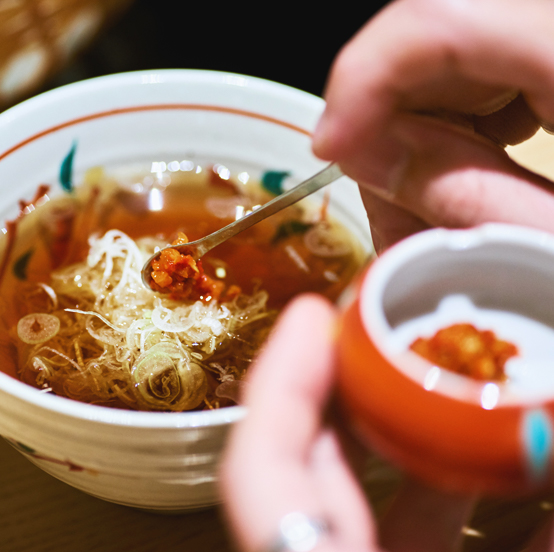
3Using the yakumi
You can add sliced white leek and yuzu citrus pepper to the sauce as you like. Yuzu citrus pepper is spicy, so add a little at a time to taste.
Cooking Time
- Beef:
- 5–10 seconds
- Pork:
- 10–20 seconds. Please make sure the pork is cooked thoroughly.
Pork cannot be consumed raw. Please make sure that it is fully cooked.
- Vegetables:
- 2–8 minutes. Mushrooms and the stalks of green vegetables may take longer to cook.
- Noodles:
- 4 minutes.
Sukiyaki
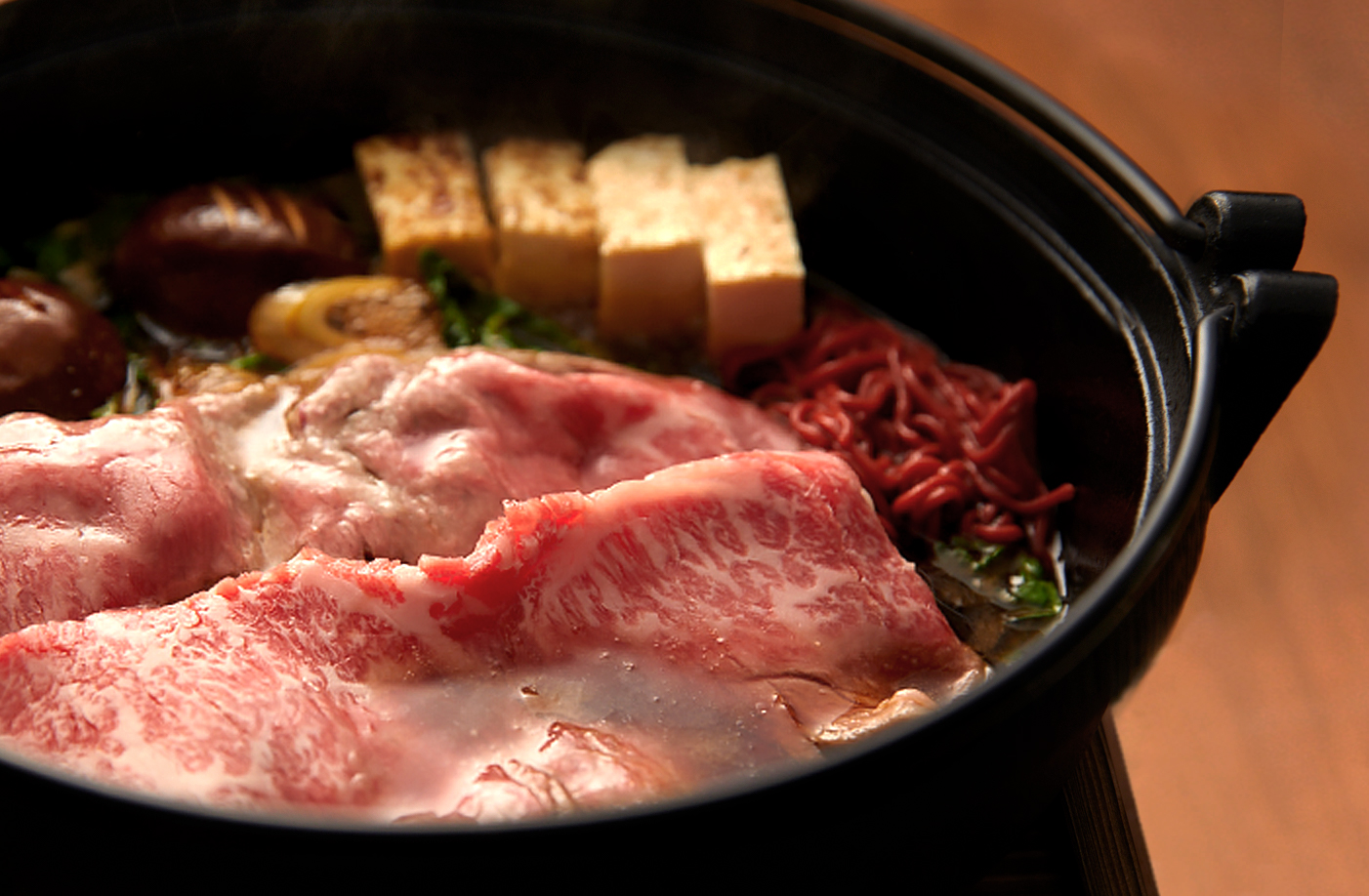
Thin slices of beef (or pork) are grilled and simmered together with vegetables and tofu in broth made from kombu seaweed and a sweet and spicy sauce with a soy sauce and sugar base. The ingredients are then dipped in beaten raw egg and eaten. The combination of the sweet and spicy sauce similar to teriyaki and the mild sweetness of the egg have made sukiyaki a popular Japanese dish.
Sukiyaki
-
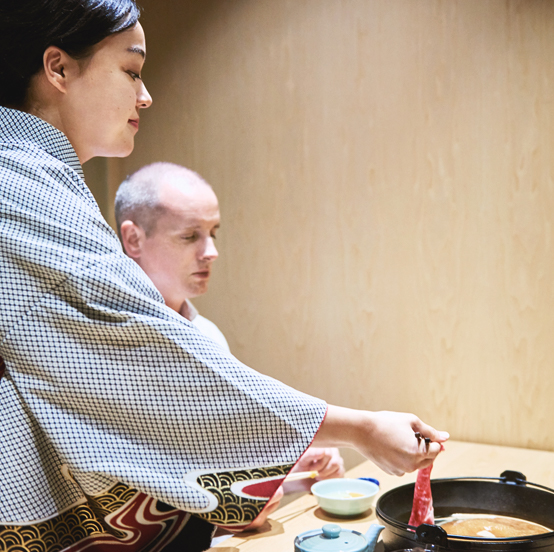
1Staff show you how to grill the meat and vegetables
Sukiyaki stock is placed in the pan. Staff will prepare the first serving of meat and vegetables in advance. Guests may be asked to do this when there is a large party.
-

2Raw egg for dipping
Dip the cooked meat and vegetables in the beaten raw egg and enjoy. If you do not like raw egg, you may substitute the raw egg with our house-made vegetable-based sukiyaki sauce (separate charge).
-
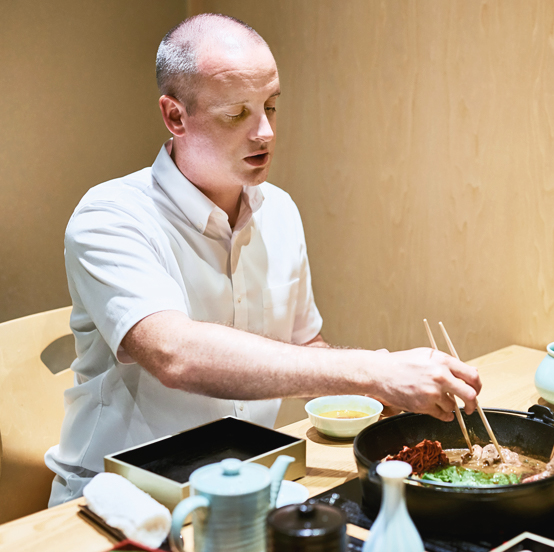
3Grill more sukiyaki yourself
Grill the second serving of meat the way the staff prepared the first serving. Add other vegetables, red konnyaku (konjac), and o-fu (wheat gluten) as you like.
-
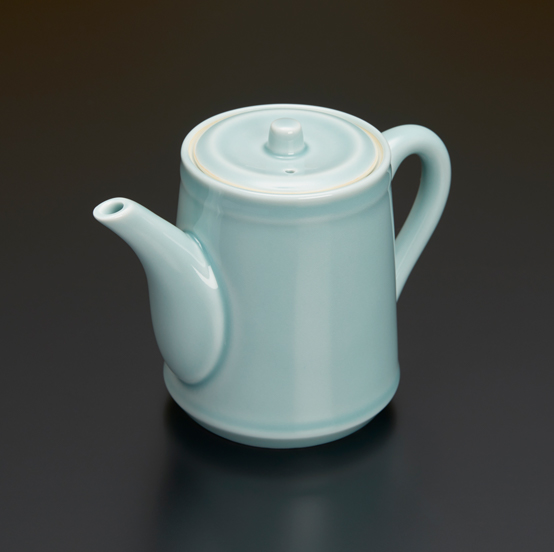
4Adjusting the flavor
If the flavor becomes too strong when the ingredients have boiled down, you may add broth from the light blue pot to your liking.
-
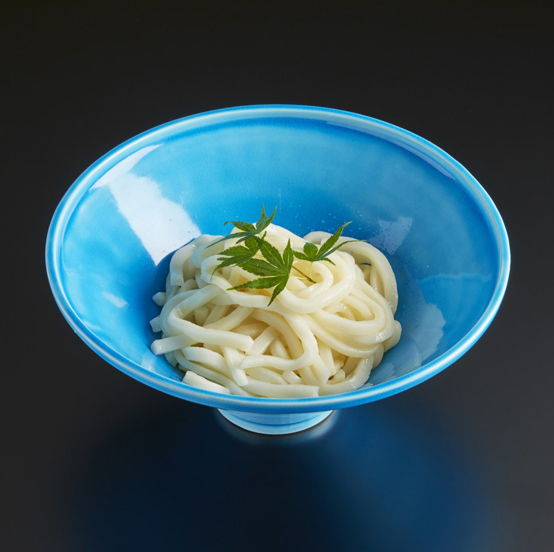
5Udon
At the end of the meal, staff will bring you udon noodles. Simmer the noodles together with the leftover egg and enjoy.
Hassun
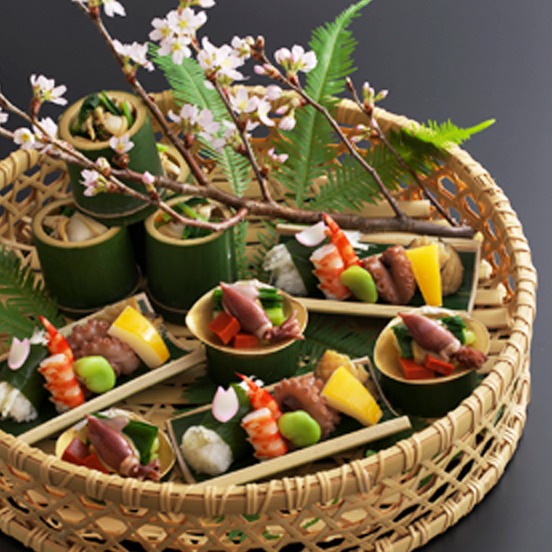
A dish called hassun is often served at the beginning of shabu-shabu, sukiyaki, and kaiseki meals. This is a traditional Japanese kaiseki dish that means assorted bite-size appetizers.
The box is filled with different dishes, each of which have been made by hand using fresh, seasonal ingredients. They are meant to please the eye and offer distinct taste sensations.
Yakumi
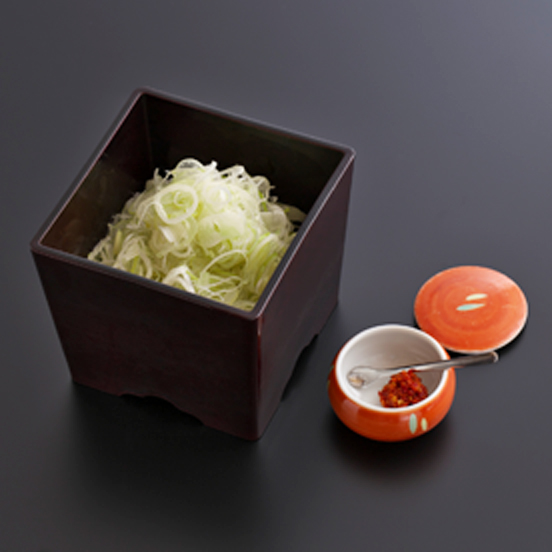
Yakumi serves the purpose of spice. Adding just a little yakumi to dishes changes their flavor. You can add any of the yakumi to your food as you like, or none at all.Wasabi is a well-known example of yakumi. Wasabi neutralizes the smell of raw fish in sushi and sashimi and brings out the fish's fresh flavor. At our restaurants, yuzu citrus pepper (a spicy blend of yuzu, a type of Japanese citrus, and red pepper), and sliced raw onion, are yakumi you can add to shabu-shabu broth. Yakumi transform foods and highlight their flavors. Try a little yakumi at a time to find your desired level of flavor.














